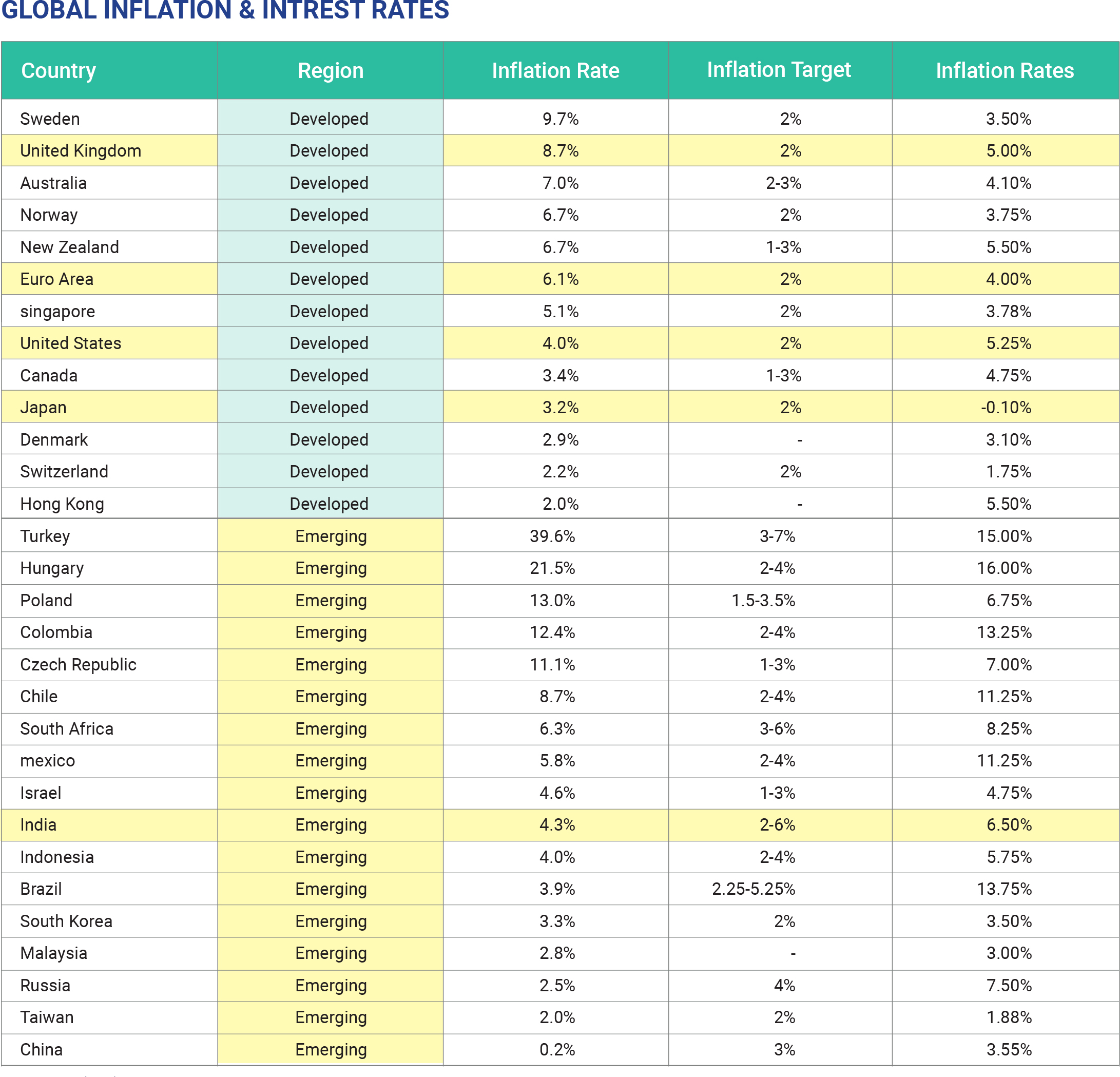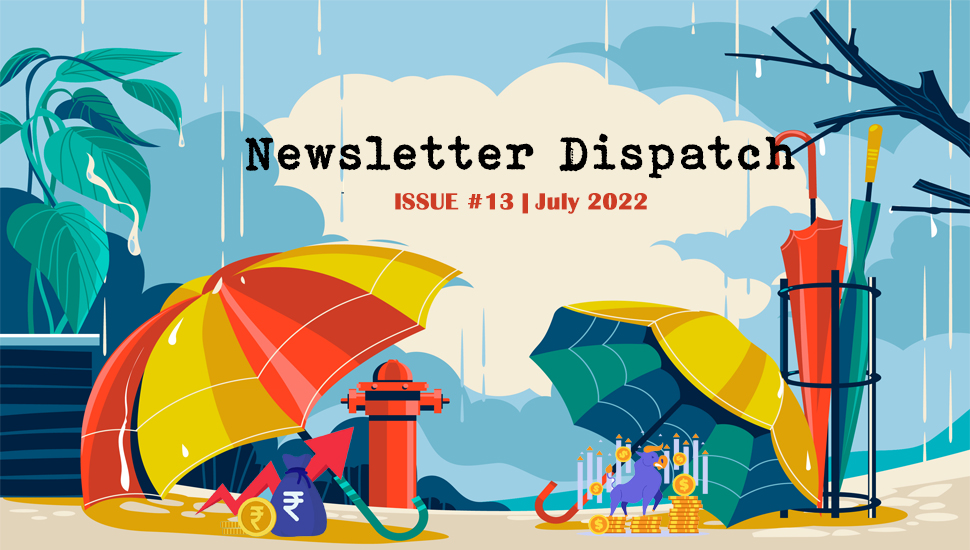As prices soar, the major world economies are trying to
find a way to tackle them. Across the world the people
feel the brunt of hefty prices for the things they buy every
day. Covid has disturbed the world economies and now
the policy makers are struggling to balance out its
effects.
The uncertainty to curb the inflation could result in destabilize the period of spiralling prices. Higher inflation
would squeeze the people and businesses making future
unpredictable for them. Too aggressive approach of
policy makers could lead to crumpling global economy.
This could lead to the major recession, shutting down
businesses and increasing unemployment. So, the
policymakers are taking precautionary steps to bring
down the inflation across the world.
Few leaders of major central banks in North America,
Europe and others have recently stated that they would
continue raising the rates as inflation is moderate and
remain well above their target rates that is 2%. U.S.
Federal Reserve have raised their policy rate to just above
5% from near zero in March 2022, and they forecast
raising it two more times in 2023, to just above 5.5%.
Policymakers at the European Central Bank, which sets
policy for the 20 countries that use the euro, also expect
to continue raising rates, which have reached the highest
level since 2001. The Bank of England recently surprised
investors by raising rates more than expected with its
13th consecutive increase. In a recent report, its stated
that quite a few Asian countries are expected to cut interest rates ahead of the US Fed, starting in the end of 2023
to support demand recoveries into 2024. Despite a
500-bps rate hike by the US Fed from March 2022, much
of the US economy has remained strong.
The recent report by Asian research company, stated that
the growth is supported by government spending on new
industry programs and strong growth in decarbonisation
industries. As a result, core inflation in May of 5.3%
on-year is now above headline inflation (4.1%). Further, it
stated that going by historical evidence, unless the US
Fed pushes core inflation down towards 2 per cent by
rate hikes, inflation may well spiral up. For Europe the
region is not as buoyant as the US and is doing better
than expected, while maintaining that the European
Central Bank (ECB) will persist with rate hikes in H2 2023
before switching to a string of rate cuts in 2024, possibly
ahead of the US Fed. Since the ECB’s team expects GDP
growth to slow to 0.9% this year (from 3.5% in 2022)
followed by a lift to 1.5% in 2024 while inflation slows
from 5.4% to 3.0%. The report has lifted its 2023 GDP
forecast for India to 5.8% from 5.4% while nudging 2024
to 6.2% from 6%. It said that the inflation and interest rate
headwinds should ease into 2024 with increase in
consumer demands and manufacturing growth.
In the month of June ‘23, world's major central banks
delivered the biggest number of monthly interest rate
hikes, surprising markets and flagging more tightening
ahead as policy makers struggle to fight the inflation.
According to the Reuters data, seven out of the nine
central banks with 10 most heavily traded currencies
done rate hike in June while two opted for no change.


